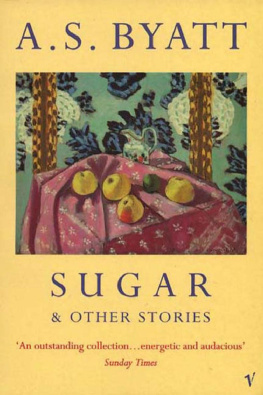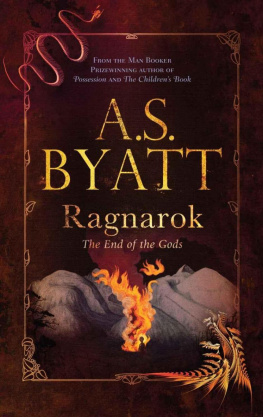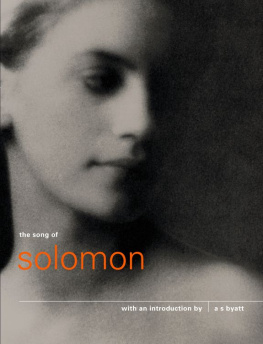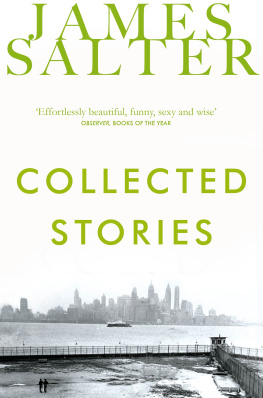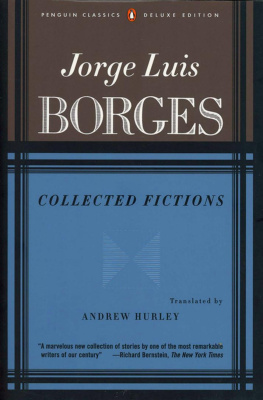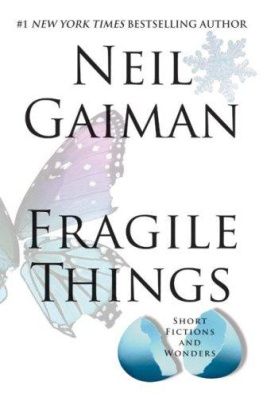A.S. Byatt - Sugar and Other Stories
Here you can read online A.S. Byatt - Sugar and Other Stories full text of the book (entire story) in english for free. Download pdf and epub, get meaning, cover and reviews about this ebook. year: 1992, publisher: Vintage, genre: Art. Description of the work, (preface) as well as reviews are available. Best literature library LitArk.com created for fans of good reading and offers a wide selection of genres:
Romance novel
Science fiction
Adventure
Detective
Science
History
Home and family
Prose
Art
Politics
Computer
Non-fiction
Religion
Business
Children
Humor
Choose a favorite category and find really read worthwhile books. Enjoy immersion in the world of imagination, feel the emotions of the characters or learn something new for yourself, make an fascinating discovery.
Sugar and Other Stories: summary, description and annotation
We offer to read an annotation, description, summary or preface (depends on what the author of the book "Sugar and Other Stories" wrote himself). If you haven't found the necessary information about the book — write in the comments, we will try to find it.
Sugar and Other Stories — read online for free the complete book (whole text) full work
Below is the text of the book, divided by pages. System saving the place of the last page read, allows you to conveniently read the book "Sugar and Other Stories" online for free, without having to search again every time where you left off. Put a bookmark, and you can go to the page where you finished reading at any time.
Font size:
Interval:
Bookmark:


SUGAR AND
OTHER STORIES
A.S. Byatt
This is a work of fiction. Names and characters are the product of the authors imagination and any resemblance to actual persons, living or dead, is entirely coincidental This electronic book is sold subject to the condition that it shall not by way of trade or otherwise, be lent, resold, hired out, or otherwise circulated without the publishers prior consent in any form other than that in which it is published and without a similar condition including this condition being imposed on the subsequent purchaser Copyright A.S Byatt 1987
AS Byatt has asserted her right under the Copyright, Designs and Patents Act, 1988 to be identified as the author of this work
Microsoft Reader edition, 1843450429
Adobe Acrobat eBook Reader edition, 1843450437
This edition published in 2001 by Random House eBooks
First UK print edition published in 1987 by Chatto & Windus Ltd Current UK print edition published in 1995 by Vintage
Imprints of The Random House Group Limited
www.randomhouse.co.uk
www.booksattransworld.co.uk
For Michael Worton
CONTENTS
RACINE AND THE TABLECLOTH
When was it clear that Martha Crichton-Walker was the antagonist? Emily found this word for her much later, when she was a grown woman. How can a child, undersized and fearful, have enough of a self to recognize an antagonist? She might imagine the malice of a cruel stepmother or a jealous sister, but not the clash of principle, the essential denial of an antagonist. She was too young to have thought-out beliefs. It was Miss Crichton-Walkers task, after all, to form and guide the unformed personality of Emily Bray. Emily Brays ideas might have been thought to have been imparted by Martha Crichton-Walker, and this was in part the case, which made the recognition of antagonism peculiarly difficult, certainly for Emily, possibly for both of them.
The first time Emily saw Miss Crichton-Walker in action was the first evening of her time at the school. The class was gathered together, in firelight and lamplight, round Miss Crichton-Walkers hearth, in her private sitting-room. Emily was the only new girl: she had arrived in mid-year, in exceptional circumstances (a family illness). The class were thirteen years old. There were twenty-eight of them, twenty-nine with Emily, a fact whose significance had not yet struck Emily. The fireside evening was Miss Crichton-Walkers way of noticing the death of a girl who had been in the class last term and had been struck by peritonitis after an operation on a burst appendix. This girl had been called Jan but had been known to the other girls as Hodgie. Did you hear about Hodgie, they all said to each other, rushing in with the news, mixing a kind of fear with a kind of glee, an undinted assurance of their own perpetuity. This was unfortunate for Emily; she felt like a substitute for Hodgie, although she was not. Miss Crichton-Walker gave them all pale cocoa and sugar-topped buns, and told them to sit on the floor round her. She spoke gently about their friend Hodgie whom they must all remember as she had been, full of life, sharing everything, a happy girl. She knew they were shocked; if at any later time they were to wish to bring any anxieties or regrets to her, she would be glad to share them. Regrets was an odd word, Emily perhaps noticed, though at that stage she was already willing enough to share Martha Crichton-Walkers tacit assumption that the girls would be bound to have regrets. Thirteen-year-old girls are unkind and in groups they are cruel. There would have been regrets, however full of life and happy the lost Hodgie had been. Miss Crichton-Walker told the girls a story. It made a peaceful scene, with the young faces turned up to the central storyteller, or down to the carpet. Emily Bray studied Miss Crichton-Walkers appearance, which was firmly benign and breastless. Rolled silver curls, almost like a barristers wig, were aligned round a sweet face, very soft-skinned but nowhere slack, set mild. The eyes were wide and very blue, and the mouth had no droop, but was firm and even, straight-set. Lines led finely to it but did not carve any cavity or depression: they lay lightly, like a hairnet. Miss Crichton-Walker wore, on this occasion and almost always, a very fine woollen dress, nuns veiling with a pleated chest, long fitted sleeves, and a plain white Peter Pan collar. At her neck was a simple oval silver brooch. There was something essentially girlish
not skittish, or sullen, or liquid, but unmarked, about this face and body, which were also those of a neat, elderly woman.
The story was allegorical. It was about a caddis-grub which scuttled about on the floor of a pond, making itself a makeshift tube-house of bits of gravel, twigs and weed to cover its vulnerable and ugly little grub body. Its movements were awkward and painful, its world dank and dimly lit. One day it was seized with an urge to climb which it could not ignore. Painfully it drew its squashy length out of its abandoned house and made its way, bursting and anguished, up a tall bulrush. In the bright outer air it hardened, cased in, and then most painfully burst and split, issuing forth with fine iridescent wings and darting movements, a creature of light and air. Miss Crichton-Walker enjoyed this tale of contrasts. Emily Bray could not make out she was never much to make out, it was her failing what the other girls thought or felt. Always afterwards she imagined the dead Hodgie as grub-like and squashy. During the telling she imagined the others as little girls, although she herself was the smallest in size, puny and stick-like. They all sat in their dressing-gowns and pyjamas, washed and shapeless. Later in the dormitory they would chatter agitatedly, full of opinions and feelings, pointing fingers, jutting chins. Here they were secret and docile. Miss Crichton-Walker told them they had had a peaceful evening together and that had been good. Emily Bray saw that there were two outsiders in the room. There was herself, set aside from the emotion that was swimming around, and there was Miss Crichton-Walker who wanted them all to be sharing something. Every Wednesday and every Sunday the school walked into the centre of the cathedral city to go to church. On Wednesday they had their own service, shared with their brother school, Holy Communion and Morning Prayer. On Sunday they made part a large part of the general congregation. There were rules about walking through the city; they did not go in a crocodile, but were strictly forbidden to walk more than two abreast through the narrow streets. Three laughing girls, horseplaying perhaps, had once swept over an old lady outside Boots, had fractured frail bones and been cautioned by the Police. A result of this reasonable ruling was that it was important for each girl to have a partner, someone to walk with, a best friend. Girls of that age choose best friends naturally, or so Emily had observed, who had not had a best friend since her days in the junior school, before her unfortunate habits became pronounced. The church-walking added forms and rituals to the selection and rejection of best friends. Everyone knew if a couple split up, or a new couple was formed. Emily discovered quickly enough that there was a floating population of rejects, rag, tag, bobtail, who formed feebler ties, ad hoc partnerships, with half an eye on the chance of a rift between a more acceptable pairing. She assumed she would belong with these. She had no illusions about her chances of popularity in the class. The best she could hope for was decent anonymity. She also knew that decent anonymity was unlikely. When the exam results came, she would be found out. In the interim, she realized quickly enough the significance of the size of the class, twenty-nine girls. There would always be a final reject, one running round when all the musical chairs were occupied. That one would be Emily Bray. You might suppose that grown-up, intelligent schoolmistresses would be capable of seeing the significance of twenty-nine, or that it might be possible for Emily to point it out, or recall it to them, if they did not. You also almost certainly know enough about conventional institutional rigours to be unsurprised that it was quite impossible for Emily to say anything coherent when, as happened regularly, she was caught up in the street and reprimanded for tagging along in a threesome. (Walking anywhere alone was an unthinkable and serious offence.) She dreaded Wednesdays and Sundays, working herself up on Tuesdays and Saturdays to beg, with mortified mockcasual misery, to be allowed to come along. After she began to get exam results, the situation, as she had foreseen, worsened. With appalling regularity, with unnatural ease and insulting catholicity, Emily Bray came first in almost everything except maths and domestic science. She came first in the theoretical paper of the domestic science, but her handiwork let her down. She was a simply intellectual creature. She was physically undeveloped, no good at sport, no one to chatter to about sex, or
Next pageFont size:
Interval:
Bookmark:
Similar books «Sugar and Other Stories»
Look at similar books to Sugar and Other Stories. We have selected literature similar in name and meaning in the hope of providing readers with more options to find new, interesting, not yet read works.
Discussion, reviews of the book Sugar and Other Stories and just readers' own opinions. Leave your comments, write what you think about the work, its meaning or the main characters. Specify what exactly you liked and what you didn't like, and why you think so.

